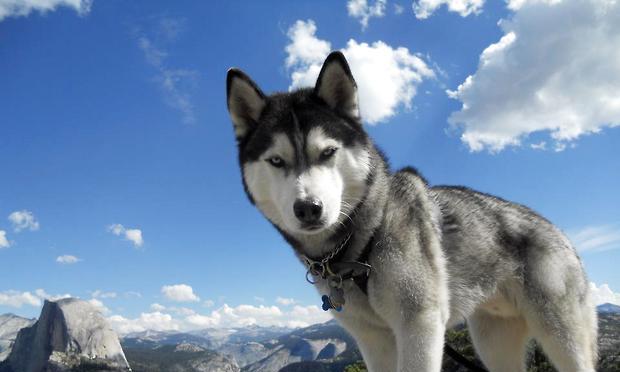The Siberian Husky (Russian: Сибирскийхаски, Sibirskiyhaski, English: Siberianhusky) is commonly known as the Husky.

Siberian Husky
The characteristic temperament of the Siberian Husky is friendly and gentle, but also alert, enthusiastic, intelligent, docile, and enthusiastic.
English name
SiberianHusky
history
The Siberian husky is a breed of dogs raised by the Inut Georges, a nomadic people in East Siberia. It has always been used to pull sleds, guide reindeer and guard.
character
The typical character of the Husky is friendly, gentle, alert and likes to socialize.
suitable population
It is suitable for both urban and rural areas, and it is better to be spacious. It is best to live in the suburbs, and it is better to have a fenced yard. It is also suitable for breeders who have more open space in the residential area, who are afraid of being alone and need someone to accompany them, and have a lot of energy and exercise.
breed standard
Exterior
The Siberian Husky is a medium-sized working dog with light feet and graceful movements.
size, proportions, shape
Height: Males, 21-23 inches at the shoulder; females 20-22 inches.
Weight: Males, 45-60 lbs; females, 35-50 lbs.
Disqualified: Males over 23 inches and females over 22 inches.
head
The expression is firm, but friendly; curious, even mischievous.
The eyes are almond-shaped, moderately spaced and slightly oblique.
Defects: Eyes too slanted; too close.
The ears are thick, covered with thick fur, slightly arched where the neck joins the head, and erect vigorously. The tip is slightly rounded, pointing straight up.
Defects: Ears and head are out of proportion, appearing too large; too wide apart; not erect enough.
The skull is medium in size, in proportion to the body; slightly rounded at the top, tapering from the widest point to the eyes.
Defects: The head is clumsy or too heavy; the outline of the head is too sharp.
Stop (dimples on the face) - The stop is very obvious and the bridge of the nose is straight from the stop to the end.
Defect: stop is not obvious.
The muzzle is of moderate width, tapering, neither pointed nor square at the end.
Defects: The muzzle is too thin or too thick; too short or too long.
Lips are evenly pigmented and tightly closed.
Defect: Non-scissors bite.
neck, topline, body
Neck: Moderately long, arched, erect when the dog stands.
Defects: The neck is too short, too thick; too long.
Chest: Deep, strong, but not too broad, with the deepest point just behind and level with the elbows.
Defects: Chest that is too wide; "barrel ribs"; ribs that are too flat or weak.
Back: Straight and strong, with a straight topline from withers to croup.
Defects: loose, weak back; arched back; sloping topline.
Tail
The tail is rich in fur, like a fox tail, just below the topline, and is usually carried on the back in a graceful scythe curve when the dog is at attention.
Defects: Tail laid flat or tightly curled; base of tail set too high or too low.
forequarters
Shoulders: The shoulder blades are drawn back.
Defects: Straight shoulders; loose shoulders.
The distance of the legs from the elbow to the ground is slightly greater than the length from the elbow to the top of the withers.
Defects: splayed feet, or weak toes; claws too large and clumsy; claws too small and slender; toes turned in or out.
hindquarters
Seen from behind when standing, the hind legs are moderately spaced apart and parallel.
coat
The coat of the Siberian Husky is double-layered, medium in length, and looks thick, but not too long to obscure the dog's clear outline.
color
All colors from black to pure white are acceptable.
gait
The standard gait of the Siberian Husky is smooth and comfortable, seemingly effortless.
temperament
The typical Siberian Husky is friendly, gentle, alert and social.
genetic disease
Genetic diseases: hip dysplasia, cataracts.
Common diseases: diarrhea, acute gastric dilatation-torsion, peptic ulcer, contact dermatitis, acute wet dermatitis, acute intestinal catarrh, fungal skin disease, bronchopneumonia, canine infectious hepatitis, peptic ulcer, nocardiosis
